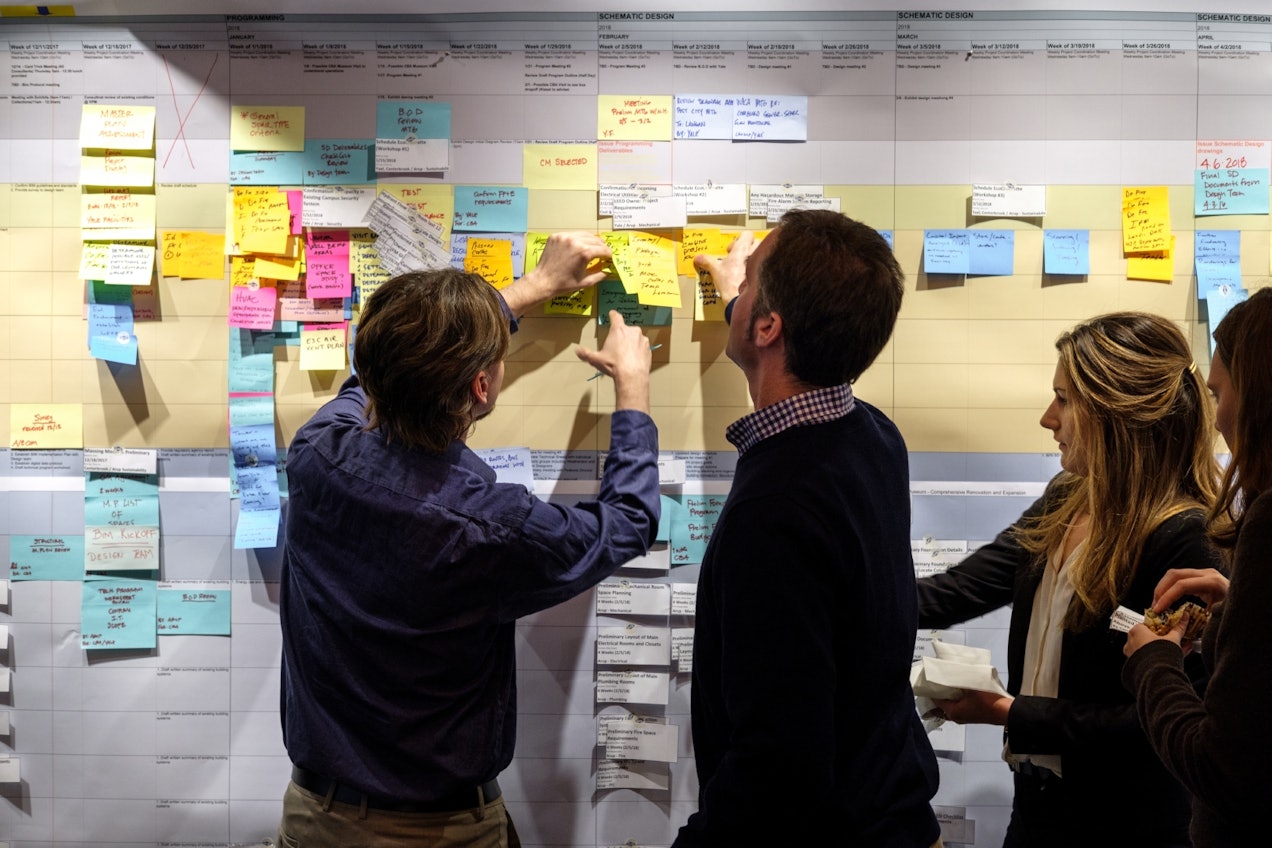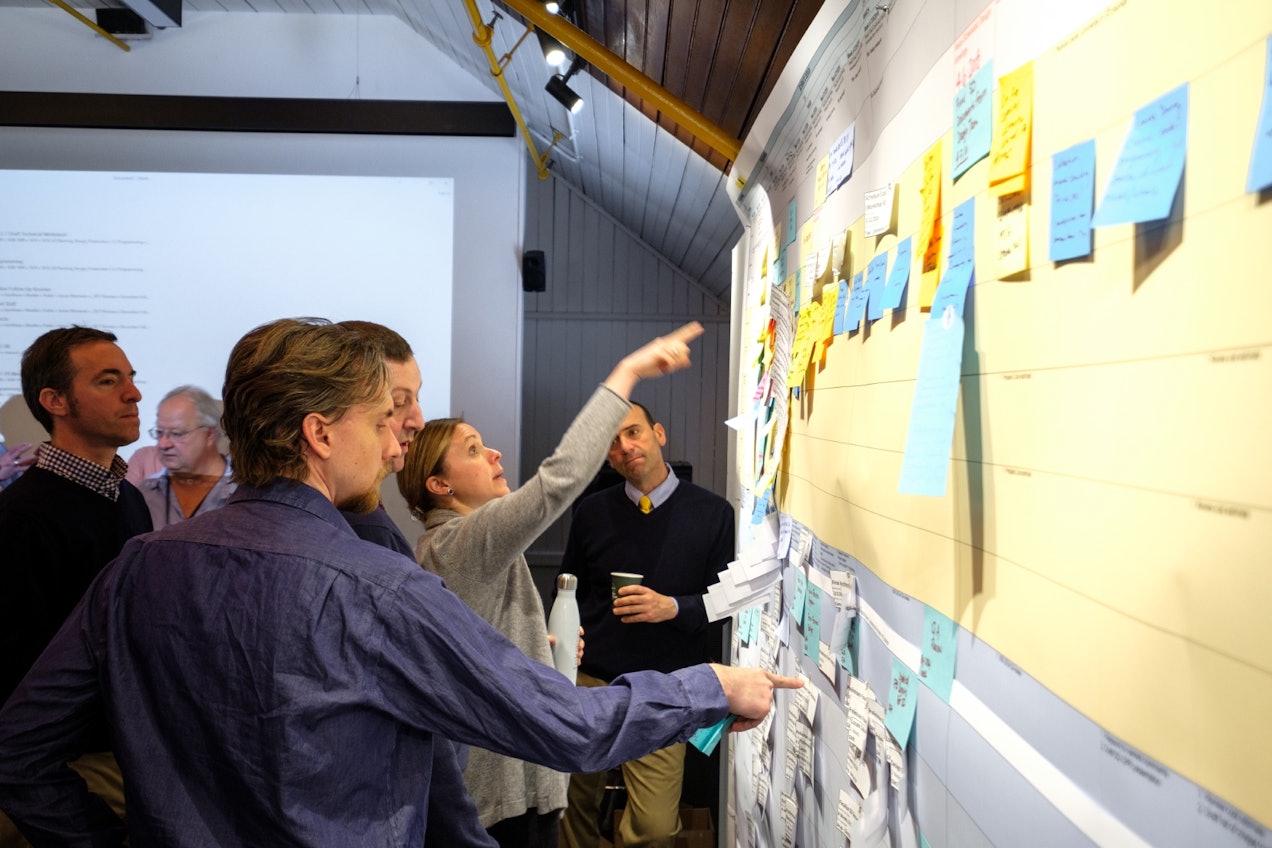Project Management
Project Management
We’ve instituted a system of project management that we call The Centerbrook Method. It’s built around our Quality Assurance Department and involves top to bottom reviews of projects at every phase of design. We’re committed to being our clients’ most reliable and creative problem-solving advocate when constructing a building.
Project Management: Topic
Assuring Quality
Our quality review system is administered by our Director of Architectural Practice and Building Science. He repeatedly checks each building’s design for coordination and constructability issues, for conflicts with consultant documents, and for code defects. As a result, our Design Team Change Orders average under 2% — well below the industry average.
In our earliest design explorations, we employ 3D modeling. This allows us to resolve conflicts between architectural, structural, and MEP systems as work progresses. We hold frequent clash detection sessions in our dedicated BIM collaboration room, known as the “Q Lab,” which facilitates our BIM collaboration and coordination.
Art Brings, Cold Spring Harbor Laboratory
Project Management: Topic
Staying on Schedule
At the start of every project, we devise a grand schedule during a confab we call a “Card Trick”. This brings together our design team, our consultants, and our Owner to negotiate and schedule project milestones. The name dates to when we used stacks of colored cue cards that we asked participants to fill out and pin to a wall calendar. Now we use a computer, but our goal is the same: a framework that identifies deliverable dates for each discipline.
Our project managers use web-based meeting technology to hold weekly team meetings in which often far-flung team members can be kept up-to-date and present their progress. These weekly meetings keep our projects on schedule.
Project Management: Topic
Controlling Budgets
We hold a program and budget review early on and make program area adjustments in real time with client participation. The exercise drives home budget implications of space decisions. As we advance the design, we involve an independent cost consultant, a building contractor, or preferably both. Whenever a project’s cost veers off budget, we put it back on track. We view the budget not as a constraint but as a positive aspect of design. Our philosophy is to embrace the budget and always to create with it an outstanding building.




